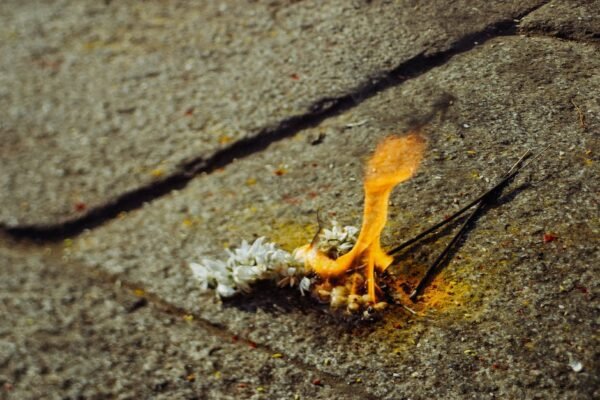Contents [hide]
The Holy See is the name given to the central governing body of the Catholic Church. The term is used both by the Catholic Church itself and by other denominations. The Holy See consists of the Pope and the Roman Curia, which includes the College of Cardinals, the Roman and Eastern Catholic bishops, and the diocesan bishops around the world.
The Holy See is the supreme governing body of the Catholic Church, comprising the Pope and the Roman Curia. Although not a sovereign state, the Holy See is headquartered in the Vatican City, which is an independent city-state enclaved within Rome, Italy. Because the Pope is the diocesan bishop of Rome, the Holy See is sometimes used as a metonym for the Pope’s ecclesiastical jurisdiction, which includes the Catholic Church worldwide, as well as the personal diplomacy of the Holy See.
Which country is the Holy See?
The Holy See is the diplomatic representative of the Roman Catholic Church and the Pope with its headquarters in Vatican City. The Holy See has been a permanent observer state at the United Nations since 1964 and has had full diplomatic relations with many countries.
The Holy See is the central governing body of the Catholic Church, and operates out of Vatican City State, a sovereign, independent territory. The Pope is the ruler of both Vatican City State and the Holy See. The Holy See is responsible for the spiritual and moral guidance of the Catholic Church worldwide, and also manages the day-to-day operations of the Vatican City State.
Why is the Vatican called the Holy See
The Holy See is the central governing body of the Roman Catholic Church, led by the pope as the bishop of Rome. The term see refers to the episcopal chair occupied by a bishop and the area over which he has responsibility. The Holy See is the supreme authority of the Catholic Church, with the pope as its head. The Holy See has a long history, dating back to the time of the apostles. It is one of the oldest institutions in the world and has played a significant role in the development of Western civilization.
The Holy See is the central government of the Catholic Church and the supreme body of Catholic ecclesiastical governance, equivalent to a Christian state. The Vatican City State was established by treaty in 1929, providing the Holy See with a small territorial base and consequent recognition as an independent sovereign entity in international law. The Holy See is neither a member state of the United Nations nor of any other international organization. It maintains diplomatic relations with 179 states, has permanent diplomatic missions in 133 countries, and is recognized as a “non-state entity” by 109 states.
Is Holy See a rich country?
Vatican City is one of the wealthiest nations in the world, with a per capita GDP of $21,198. Although the Holy See’s Nominal GDP is not published, Vatican City is estimated to be the 18th wealthiest nation in the world per capita. The Vatican’s wealth comes from a variety of sources, including donations, investments, and the sale of Vatican-related items.
Russia is an absolutely massive country compared to the Holy See (Vatican City). Russia has a land area of over 17 million square kilometers, while the Holy See (Vatican City) is a mere 0.44 square kilometers. This means that Russia is about 38,859,641 times bigger than the Holy See (Vatican City). In other words, you could fit over 99% of the Holy See (Vatican City) inside of Russia and still have plenty of room to spare.
Does the Holy See have citizens?
The Vatican City is a sovereign city-state that is located within Rome, Italy. The Vatican City has a population of about 800 residents, and over 450 of those residents have Vatican citizenship. The Vatican City is home to the 135 Swiss Guards, who are responsible for the security of the Vatican City. The Vatican City also has a diplomatic service that is responsible for its relations with other countries.
As the sovereign and head of state of Vatican City State, the Pope has supreme executive authority over the government of the state. He delegates this authority to the President of the Pontifical Commission for Vatican City State, who is also the President of the Governorate and head of government. The President is responsible for the day-to-day running of the government, while the Pope exercises ultimate authority over all matters.
Do you need a passport to go to Vatican City
The Vatican City is a landlocked country with no airport or sea borders, so the only way to enter is from Italy. The Vatican has an open-border policy with Italy, so a passport is not required to enter.
Every Wednesday, people from all over the world flock to the Vatican to hear the Pope speak. They also come to attend Mass led by the Pope during the year. The most important site in Rome for Catholic pilgrims is St Peter’s Basilica. Here, pilgrims hope to see the Pope and visit what they believe is the tomb of St Peter, underneath the basilica.
Who lives in the Holy See?
The Vatican City is a unique and special place, and the people who live there are held to very high standards. The clergy and the Swiss Guards are the only people allowed to live inside the Vatican City because they are the only ones who can uphold the standards that are required to live there.
The chief pastor of the Catholic Church is the Bishop of Rome, also known as the “Pope”. The Holy See is the governing body of the Catholic Church, which includes the Pope and the Roman Curia. The See is based in the Vatican City, a tiny sovereign state located within Rome. The Holy See has a long and rich history, dating back to the early days of Christianity. It is one of the most influential institutions in the world, and plays a significant role in the affairs of the Catholic Church.
Does the Vatican pay taxes to Italy
Vatican Media is the umbrella organization that encompasses all communication outlets of the Holy See, including radio, television, and the internet. Its mission is to evangelize through modern means and connect the Catholic Church with people all over the world. Because the Vatican functions as its own sovereign state, it is not subject to the taxation laws of other countries. This makes it difficult to maintain a balanced budget and support the many functions of the Vatican.
Vatican City is a unique state in that it has its own budget separate from the Holy See. The income for Vatican City comes from donations, real estate management, and investments. This budget is used to fund the Vatican Museums and the Vatican bank. The Holy See often transfers income from these sources to help plug any deficits.
How many countries recognize Holy See?
The Holy See has maintained diplomatic relations with other sovereign states since the 4th century. Today, it has nearly 80 permanent diplomatic missions in other countries and continues to carry on diplomatic relations with 119 nations. The Holy See is committed to peaceful relations and dialogue with all nations. It seeks to promote understanding and cooperation on issues of common concern, such as the promotion of human dignity and respect for human rights.
Pope Francis has certainly been a different kind of leader than most popes before him. He is much more interested in mindfulness and living modestly than he is in spending money. This is a refreshing change of pace, and it’s definitely something we could all learn from!
Final Words
The Holy See is the sovereign state of the Catholic Church, headquartered in the City of Rome. The state comprises the Vatican City, an enclave within Rome, Italy. The sovereign state of the Holy See has an area of 44 hectares and a population of about 1,000. The Holy See is the smallest recognized state in the world by both area and population.
Holy See is country that is located within the city of Rome. This country is the smallest in the world and is run by the Catholic Church.


0 Comments